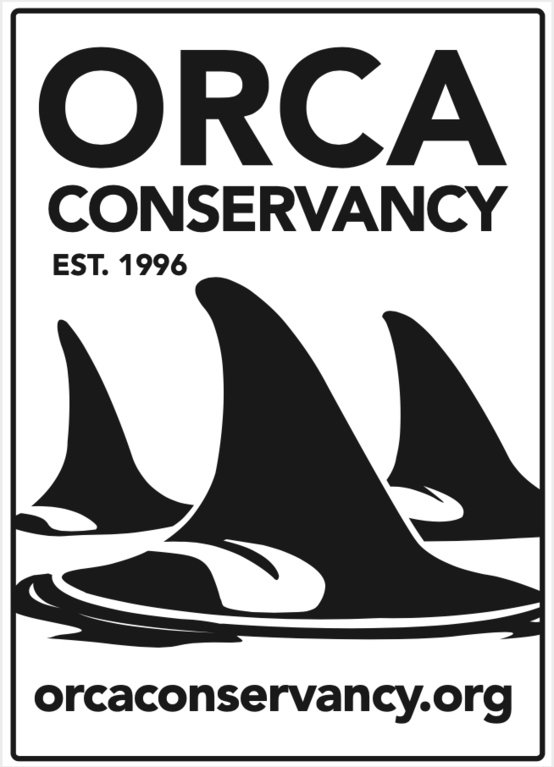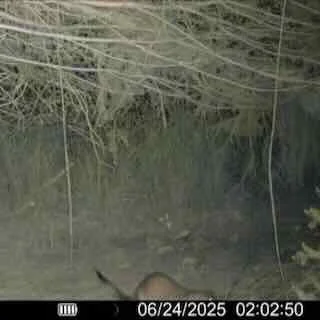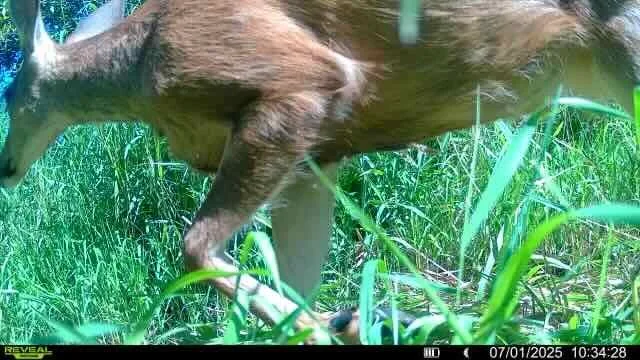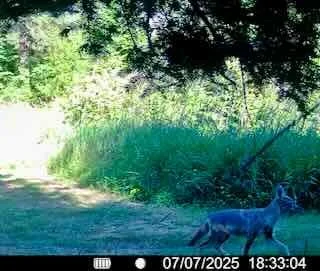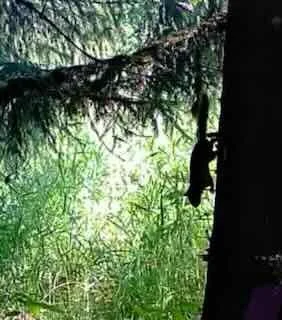Wildlife at our Berrydale Salmon Restoration Site
At our Berrydale salmon restoration site along Big Soos Creek in Kent, WA, we’ve installed two high-resolution trail cams to provide continuous, real-time observation of the ecosystem as it recovers.
These trail cams will help us monitor ecological changes, capture the return of native wildlife, and serve as a valuable educational resource offering the public and our partners a rare glimpse into the daily rhythms of the landscape as we work to restore it.
🦫 Beavers: Nature’s Water Managers -
The North American beaver (Castor canadensis) are some of the most transformative animals in the Pacific Northwest. Known as “ecosystem engineers,” they reshape the land by building dams and lodges, creating ponds and wetlands that store water, slow runoff, and recharge groundwater. These wetlands become habitat for amphibians, waterfowl, and native fish like salmon and trout.
At the Berrydale Tree Farm, beavers contribute directly to climate resilience. By holding water on the landscape longer, they buffer against both drought and flooding. Their ponds also help filter sediment and improve water quality. In a changing climate, their presence is not just beneficial, it’s essential.
🦌 Black-Tailed Deer: Browsers that Shape the Forest Floor
-
Black-Tailed Deer (Odocoileus hemionus) are native herbivores that help manage the understory of forests. Through selective browsing, they influence plant composition, opening up space for native grasses, shrubs, and forbs to grow. This creates better habitat for pollinators, ground-nesting birds, and small mammals.
At Berrydale, these deer act as a kind of natural gardener. Their movements and feeding behavior contribute to forest diversity and help maintain early successional habitats; those important transitional zones between open meadows and closed-canopy forests.
🦌 Roosevelt Elk: Landscape Architects with Hooves -
Roosevelt elk (Cervus canadensis roosevelti), the largest subspecies of elk in North America, play a powerful role in ecosystem dynamics. Their sheer size and herd behavior allow them to trample thick underbrush, open up travel corridors, and cycle nutrients through their waste. Where elk roam, they create patchworks of grassland and shrubland that support everything from insects to songbirds to carnivores.
Elk also reduce the dominance of invasive or overly aggressive plant species by consuming large volumes of vegetation.
At Berrydale, this helps maintain a mosaic of habitats and enhances ecological complexity across the landscape.
🐺 Coyotes: The Balancers of the Food Web -
Coyotes (Canis latrans) are adaptable, intelligent predators that play an important role in regulating small mammal populations. By keeping rodents, rabbits, and even mesopredators like raccoons in check, coyotes help maintain balance in the ecosystem. This, in turn, benefits plant communities and ground-nesting species that might otherwise be over-browsed or over-predated.
At Berrydale, coyotes also serve as scavengers, accelerating the decomposition of animal remains and returning nutrients to the soil. Though often misunderstood, they are vital to keeping both prey populations and ecological energy flows in balance.
🐿️ Douglas Squirrel: Seed Planter and Forest Sentinel -
Douglas squirrels (Tamiasciurus douglasii), are small and energetic residents of Washington’s conifer forests, and play a vital role in ecosystem health. By harvesting and caching cones from trees like Douglas fir and hemlock, they disperse seeds that contribute to natural forest regeneration. They also feed on underground fungi, spreading spores that support mycorrhizal networks—critical partnerships between fungi and tree roots that enhance nutrient uptake and soil health.
At Berrydale, Douglas squirrels act as ecological caretakers. Their behavior supports predator-prey dynamics, enriches forest structure through nest-building, and helps sustain biodiversity from the forest floor to the canopy. Though small, their contributions ripple widely through the ecosystem, making them a keystone species in this working landscape.
